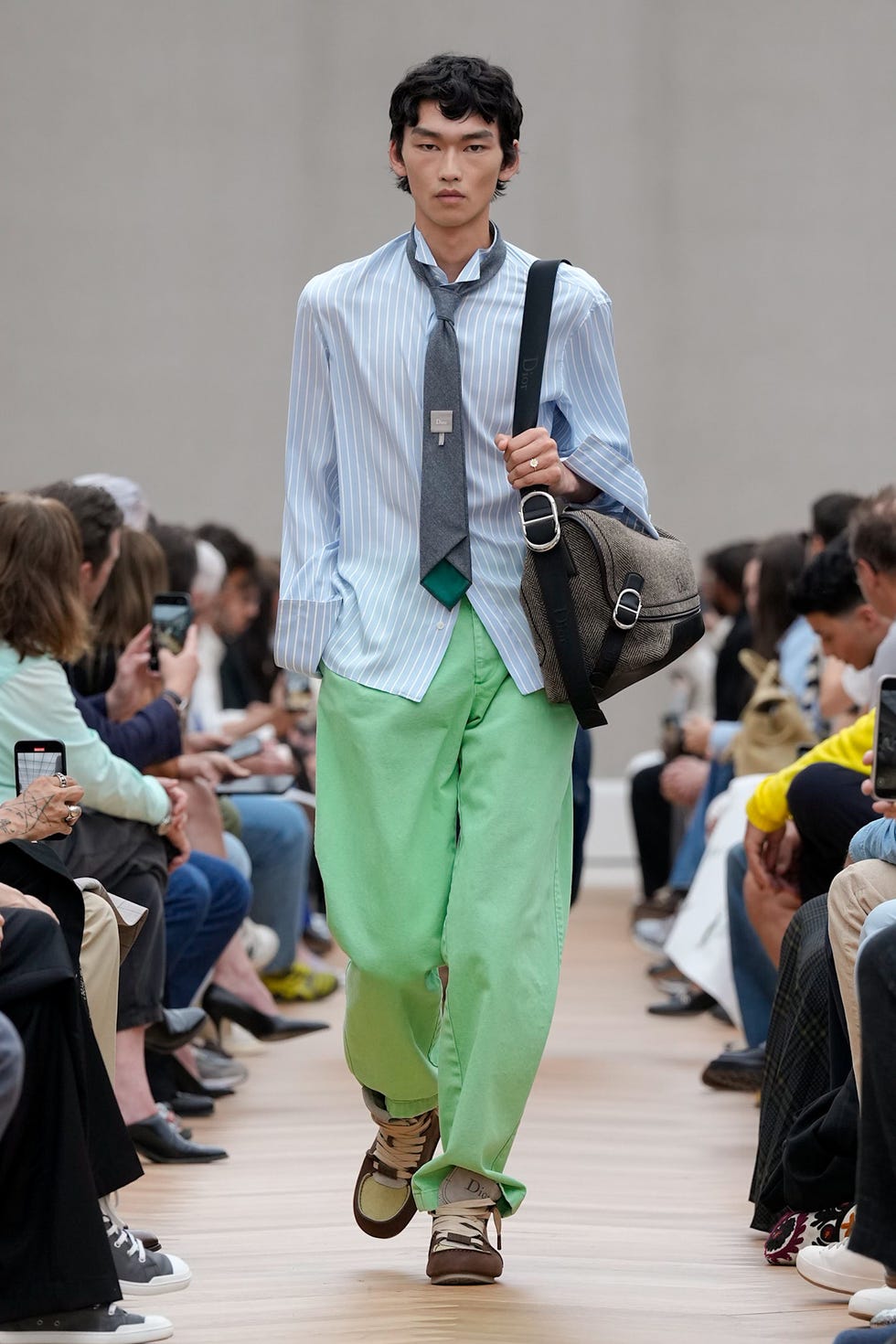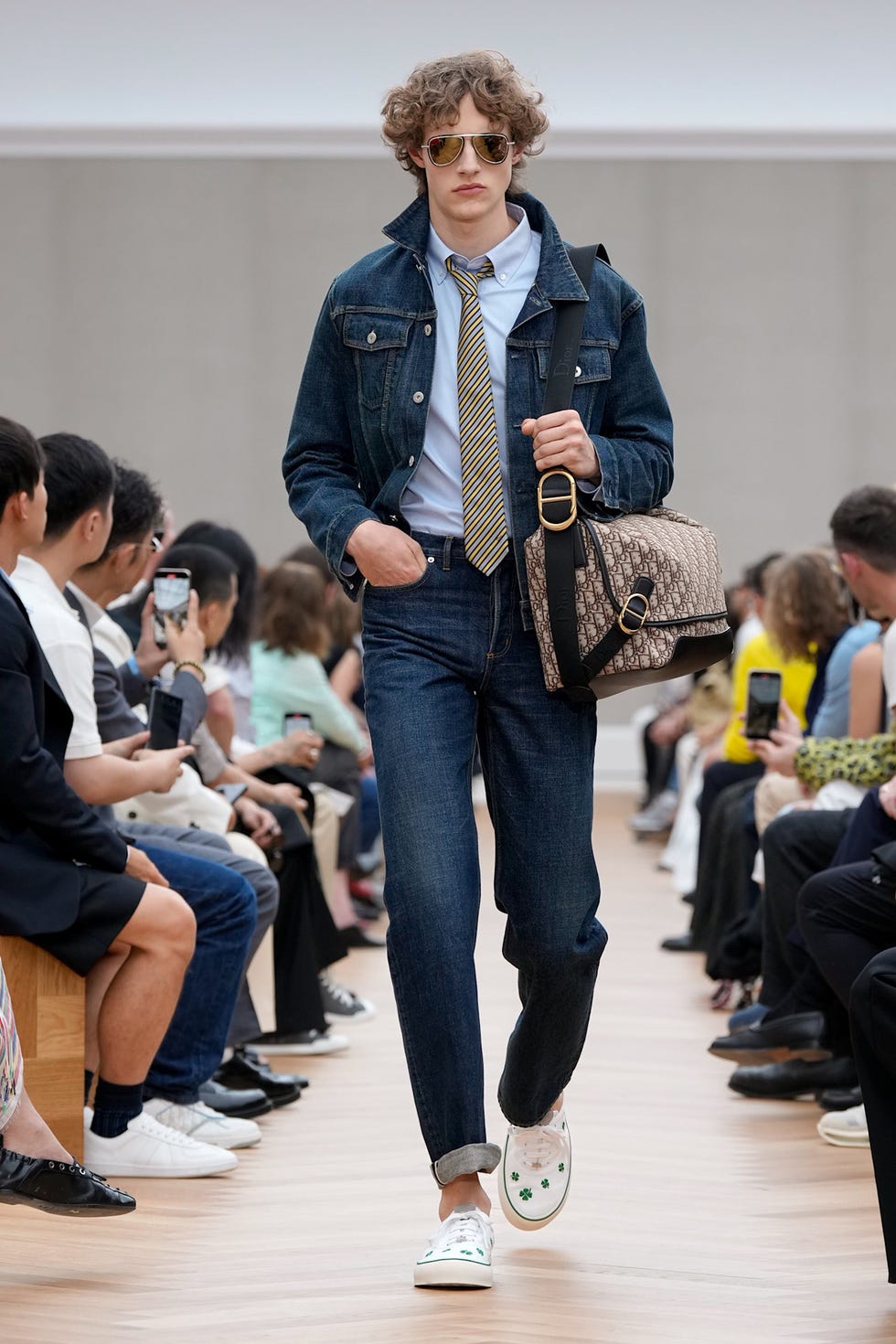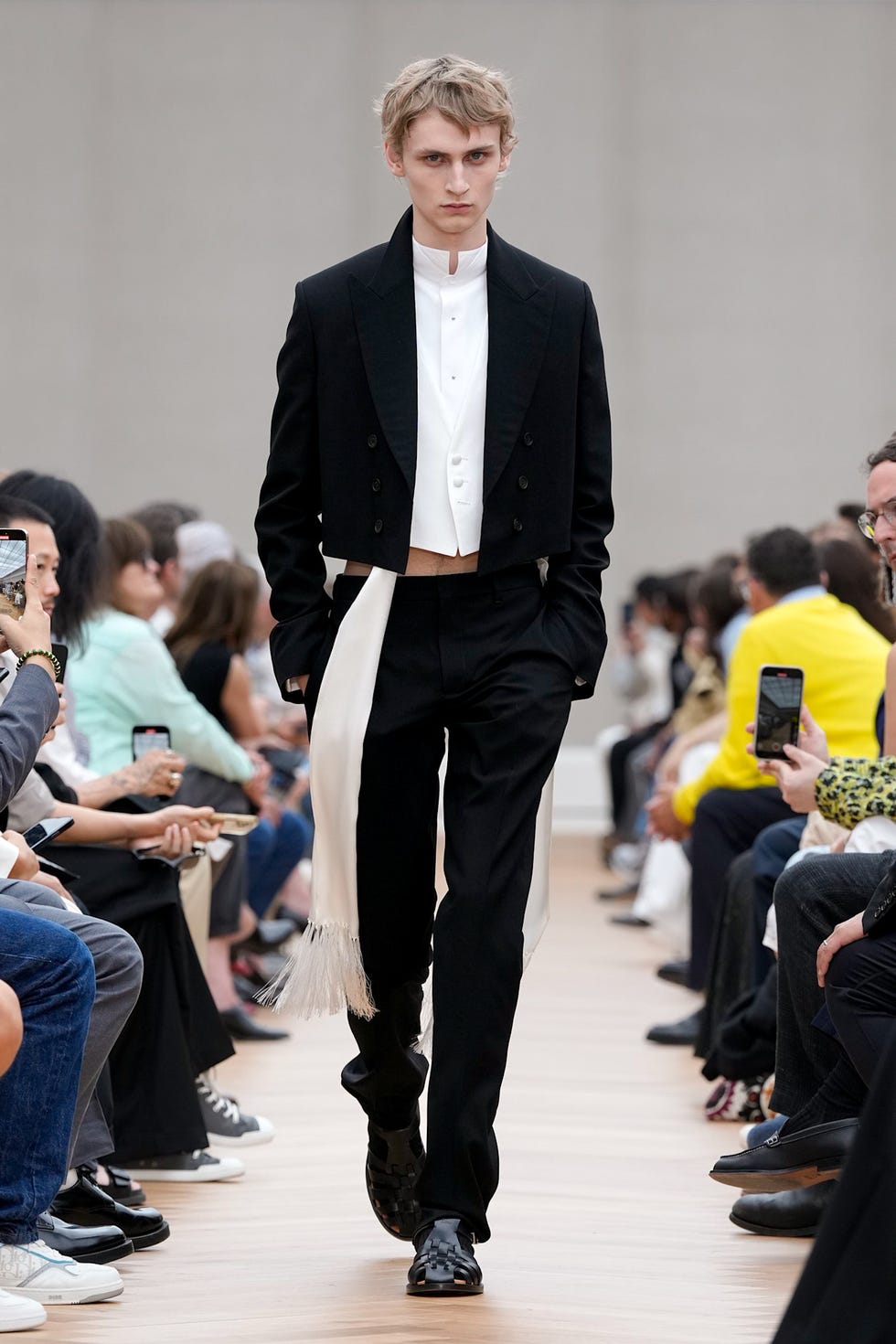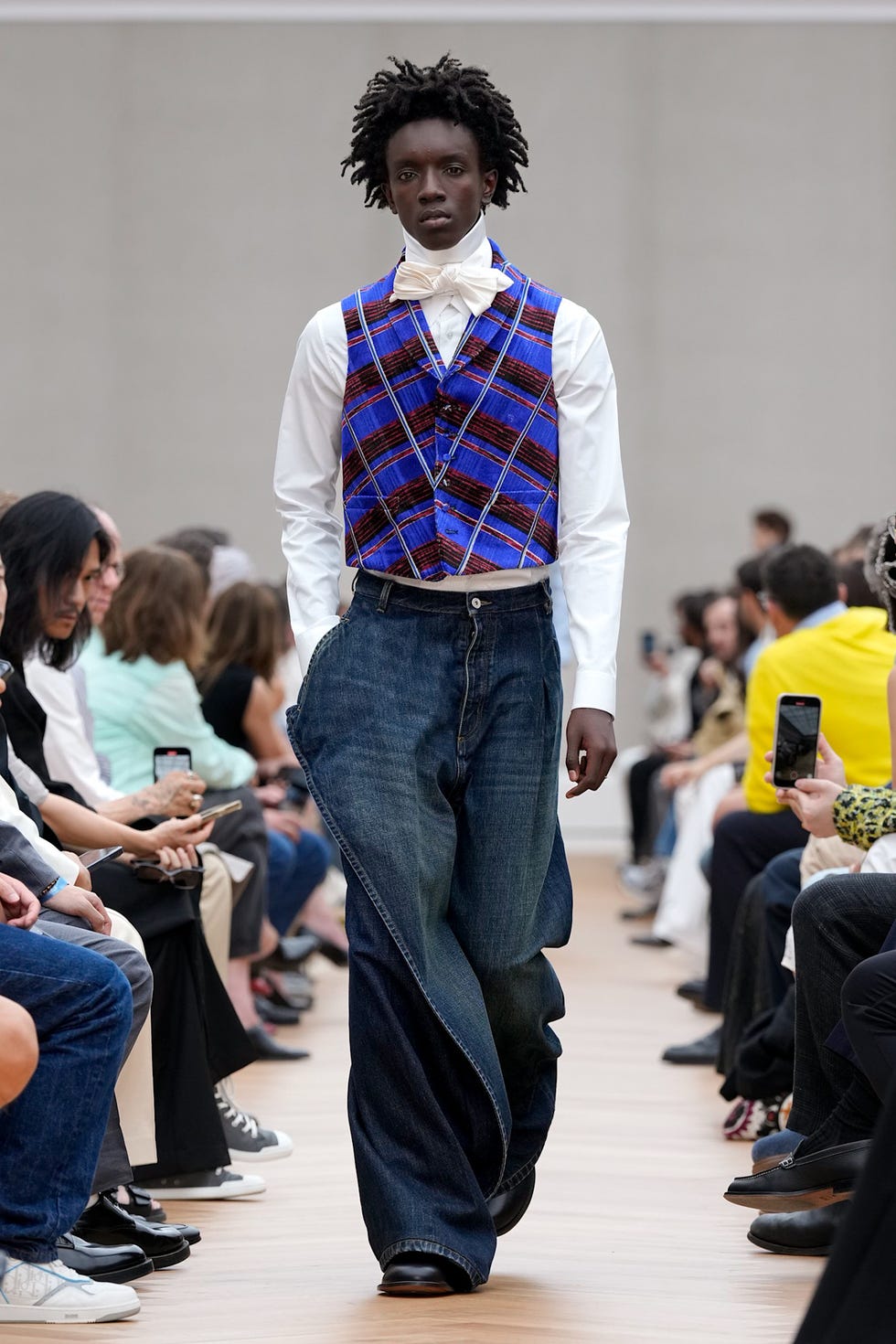Fashion rarely waits with bated breath. But when fellow creative directors Donatella Versace, Pierpaolo Piccioli, Stefano Pilati, Pharrell Williams, Jack McCollough and Lazaro Hernandez, Glenn Martens, Silvia Venturini Fendi, Nicolas Di Felice, and Simon Porte Jacquemus show up to support your debut, it’s about as close to a pause as this industry ever gets. Between the vocal support and global fanfare, one thing is abundantly clear: Jonathan Anderson’s talent as a high-output and forward-thinking designer has never wavered.
Since his official appointment to Dior Men in April (followed by his additional confirmation as the head of womenswear this June), the question instead is, How will he utilize a different brand to develop his skills in an entirely new way? Furthermore, which archival looks will speak to him through a near-century old repertoire of design, and how will he approach a gargantuan opportunity like the house of Dior? The position does not bring a clean slate, instead, the maison offers its history as a playground of potential for Anderson to interpret as he sees fit.
Prior to the show, Anderson teased deep-cut references that demonstrated his immense research and deference to the house of Dior, inspiring the ceramic egg-filled plate invite. Other mood board images were tantalizingly released, including Andy Warhol’s Polaroids of Lee Radziwill and Jean-Michel Basquiat, whose purposeful uniform of Armani suits served as a visual tool to situate himself within the narrative of Eurocentric artists.
On the runway, Anderson took measure to interpret this inspiration by replicating Basquiat’s subtle style eccentricities. Neckties were worn loosened and askew, collars were asymmetrically popped, and traditional white tie neckbands were dislocated from the rest of their would-be suits. A$AP Rocky, who arrived hand-in-hand with a pregnant Rihanna, sported one collar of his button-down tucked under his multi-colored striped tie—a direct homage to the polaroid Anderson shared.
The collection’s livestream began with a short film featuring The White Lotus’s Sam Nivola and Robert Pattinson. In the clip, as on the runway, a palpable sense of boyish charm tinged with arrogant swagger presided. Anderson has frequently returned to this energy across past collections at both Loewe and his eponymous brand; however, this interpretation felt distinctly and joyously different.
Oxfords layered under washed denim jackets, bubblegum-pink shrunken cable-knit sweaters paired with delicate floral jewelry, oversized chinos, and rugby shirts, evoked the underlying sense of privileged idealism with which these coming-of-age prep school boys perceive the world. This identity is timeless, too—we see it across generations of art and style, whether it be Gustave Flaubert’s novel Sentimental Education, the film Withnail and I, or the pant legs tucked into the socks of young and hopeful Cambridge undergraduates as they parade across the university grounds.
Formality was immediately subverted. The runway opened with Bruce Springsteen’s “State Trooper,” a surprising choice for a French house, but its punk influences echoed Anderson’s non-traditional take on Dior Men. The almost Frankenstein-like opening looks consisted of disjointed suits. Structured jackets were widened and paired with oversized cargo shorts, fisherman sandals, and plenty of bare chests. Elsewhere, waistlines were cropped, adding sensuality to an otherwise traditionally prim silhouette.
The more nuanced beauty of Anderson’s designs lies in their openness to interpretation. As opposed to presenting a collection filled with pristine individual items, Anderson created a conversation flooded with sartorial inspiration. The boyish innocence was captured through jumpsuits and backpacks, while habitual dressing was expressed through trench coats worn without shirts, as if popping out for a stroll across the estate in the morning dew.
Anderson’s wearability has always been apparent, even at Loewe. No celebrity or VIP has ever appeared overdone or uneasy—proof of the clothing’s uniquely translatable ease. For a debut, the pieces were undoubtedly exciting. However, as a collection, the ideas have the power to change the way we think about dressing, and that in itself captures what the true essence of fashion really is.
Alexandra Hildreth is the Fashion News Editor at ELLE. She is fascinated by style trends, industry news, shake-ups, and The Real Housewives. Previously, she attended the University of St Andrews in Scotland. Following graduation, she moved back to New York City and worked as a freelance journalist and producer.










